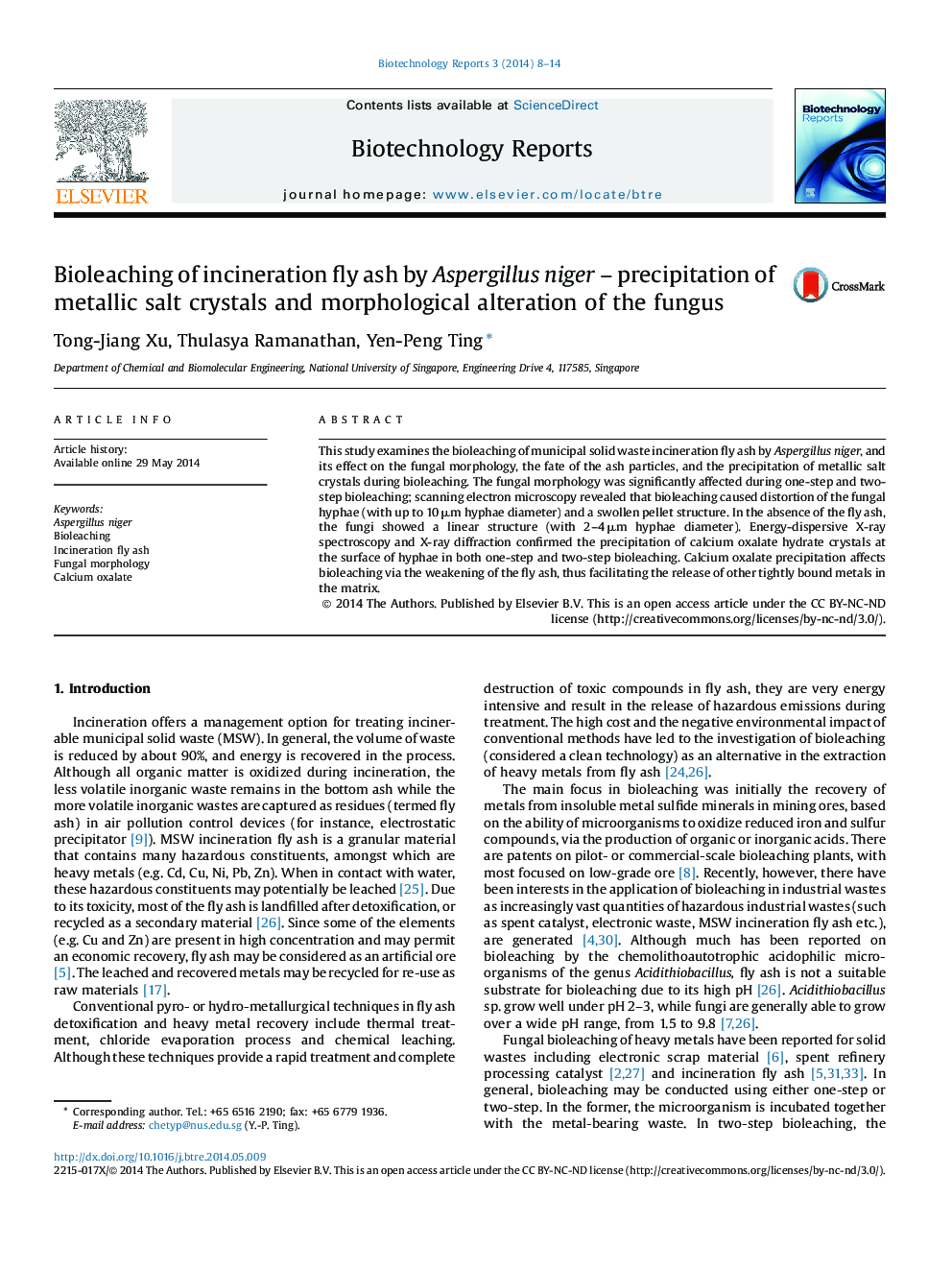| Article ID | Journal | Published Year | Pages | File Type |
|---|---|---|---|---|
| 870689 | Biotechnology Reports | 2014 | 7 Pages |
•Toxic metals in fly ash caused morphological alteration of A. niger.•Branched and swollen fungal hyphae seen in one-step and two-step bioleaching.•Nano-sized calcium oxalate crystals observed on fungal surface.•Precipitation of crystals indirectly enhanced bioleaching efficiency.
This study examines the bioleaching of municipal solid waste incineration fly ash by Aspergillus niger, and its effect on the fungal morphology, the fate of the ash particles, and the precipitation of metallic salt crystals during bioleaching. The fungal morphology was significantly affected during one-step and two-step bioleaching; scanning electron microscopy revealed that bioleaching caused distortion of the fungal hyphae (with up to 10 μm hyphae diameter) and a swollen pellet structure. In the absence of the fly ash, the fungi showed a linear structure (with 2–4 μm hyphae diameter). Energy-dispersive X-ray spectroscopy and X-ray diffraction confirmed the precipitation of calcium oxalate hydrate crystals at the surface of hyphae in both one-step and two-step bioleaching. Calcium oxalate precipitation affects bioleaching via the weakening of the fly ash, thus facilitating the release of other tightly bound metals in the matrix.
